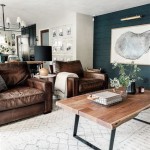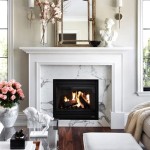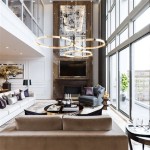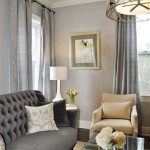Color of Living Room Interior Design
The living room often serves as the heart of a home, a space for relaxation, entertainment, and social interaction. Color plays a crucial role in establishing the desired atmosphere and aesthetic of this central space. Selecting the right color palette can significantly impact the perceived size, mood, and overall feel of the room. This article explores the various aspects of color selection for living room interior design, considering factors like natural light, room size, and desired ambiance.
Understanding the Impact of Color
Colors evoke specific psychological and emotional responses. Warm colors, such as reds, oranges, and yellows, tend to create a sense of energy, excitement, and intimacy. They are ideal for spaces designed for socializing and entertainment. Cool colors, like blues, greens, and purples, promote tranquility, calmness, and relaxation. They are often preferred for spaces intended for rest and contemplation. Neutral colors, including whites, grays, beiges, and browns, offer a versatile backdrop, providing a sense of stability and allowing other design elements to take center stage.
Considering Natural Light
The amount of natural light a living room receives significantly influences color perception. Rooms with ample natural light can handle bolder and darker colors without feeling closed in. Conversely, rooms with limited natural light benefit from lighter colors, which help to maximize brightness and create an illusion of spaciousness. South-facing rooms, which receive warm, direct sunlight, can be balanced with cooler paint colors. North-facing rooms, which receive cooler, indirect light, can be warmed up with warmer hues.
Room Size and Dimensions
Color can be used strategically to alter the perceived dimensions of a living room. Light colors tend to make a room feel larger and more open, while dark colors can create a sense of intimacy and coziness in a larger space. Using lighter colors on the walls and darker colors on the floor can create a grounding effect and visually expand the height of the room. Painting a smaller room in a single light color can create a seamless flow and enhance the sense of spaciousness.
Creating a Cohesive Color Scheme
A cohesive color scheme is essential for a harmonious and visually appealing living room. There are several approaches to developing a color scheme. Monochromatic schemes utilize variations of a single color, creating a sophisticated and unified look. Analogous schemes involve colors that are adjacent to each other on the color wheel, producing a harmonious and balanced effect. Complementary schemes utilize colors that are opposite each other on the color wheel, creating a dynamic and energetic contrast. Triadic schemes employ three colors that are evenly spaced on the color wheel, offering a vibrant and visually interesting palette.
The Role of Accent Colors
Accent colors are used sparingly to add pops of interest and personality to a living room. They can be introduced through furniture, throw pillows, rugs, artwork, and decorative accessories. Accent colors can complement or contrast with the dominant color scheme, adding depth and visual appeal. When selecting accent colors, consider the overall mood and style of the room.
The Psychology of Specific Colors
Specific colors evoke distinct psychological responses and can be used strategically to create the desired atmosphere in a living room. Blue promotes relaxation and tranquility, making it a popular choice for living rooms. Green evokes a sense of nature and freshness, creating a calming and revitalizing environment. Yellow promotes happiness and optimism, adding a cheerful touch to the space. Red stimulates energy and excitement, making it suitable for social spaces. Purple is associated with luxury and creativity, adding a touch of elegance to the room.
Testing and Sampling
Before committing to a specific color, it's crucial to test and sample the colors in the actual living room environment. Paint swatches can appear differently under various lighting conditions. Painting large sample patches on the walls allows for accurate assessment of the color's appearance throughout the day and under different lighting scenarios. This process helps to avoid costly mistakes and ensures satisfaction with the final color selection.
Incorporating Textures and Patterns
While color is a dominant factor, textures and patterns play a significant role in enhancing the overall aesthetic of a living room. Combining different textures, such as smooth velvet, rough linen, and sleek leather, adds depth and visual interest. Patterns can introduce visual rhythm and personality to the space. Consider the scale and style of patterns in relation to the room's size and existing décor.
Staying Current with Trends
While personal preference should guide color choices, staying informed about current color trends can provide inspiration and fresh ideas. Design publications, online resources, and social media platforms offer insights into emerging color palettes and design styles. However, it's essential to choose colors that resonate with personal taste and complement the overall style of the home, rather than blindly following trends.

Blue Living Room Design Ideas For Your Home Designcafe

55 Best Living Room Color Ideas According To Design Experts

Best Living Room Colors The Top 8 Trending Tones In Designer Homes Decorilla Online Interior Design

69 Best Living Room Paint Colors For 2025

The Most Popular Living Room Colours For 2025

Vibrant Visions Top Living Room Colour Trends For 2025

Living Room Color Ideas Transform Your Project Alma De Luce

32 Living Room Colour Ideas Lounge Schemes B Q

On Trend Living Room Colour Ideas For 2025 Gathered

35 Best Paint Colors For Living Rooms








